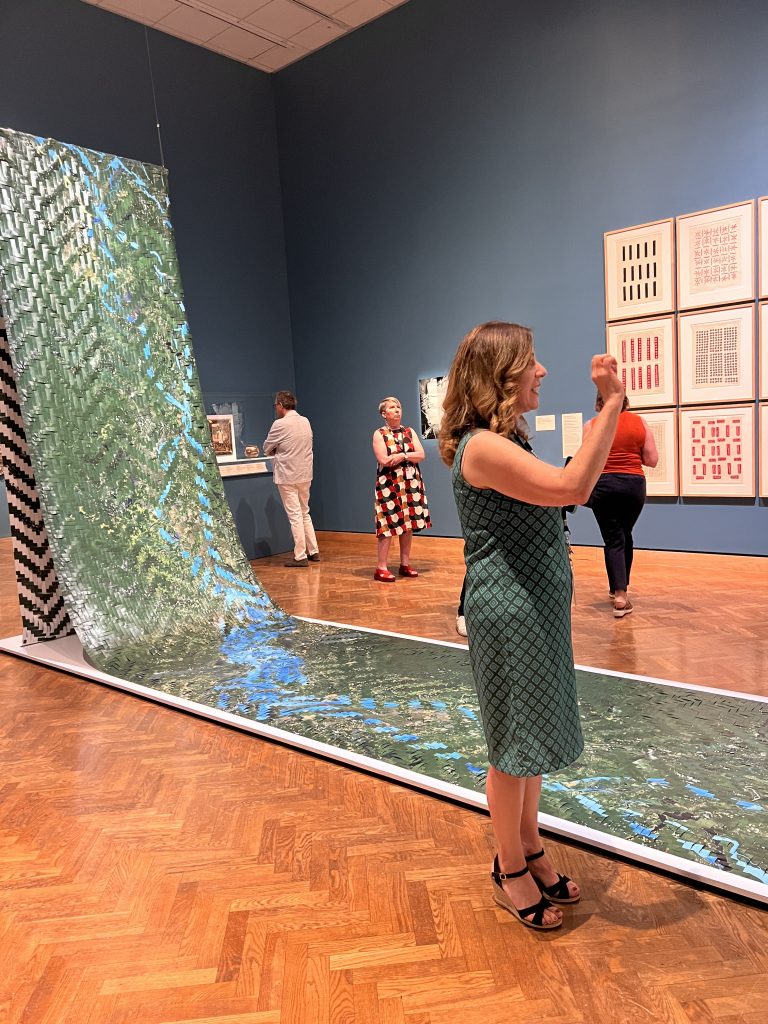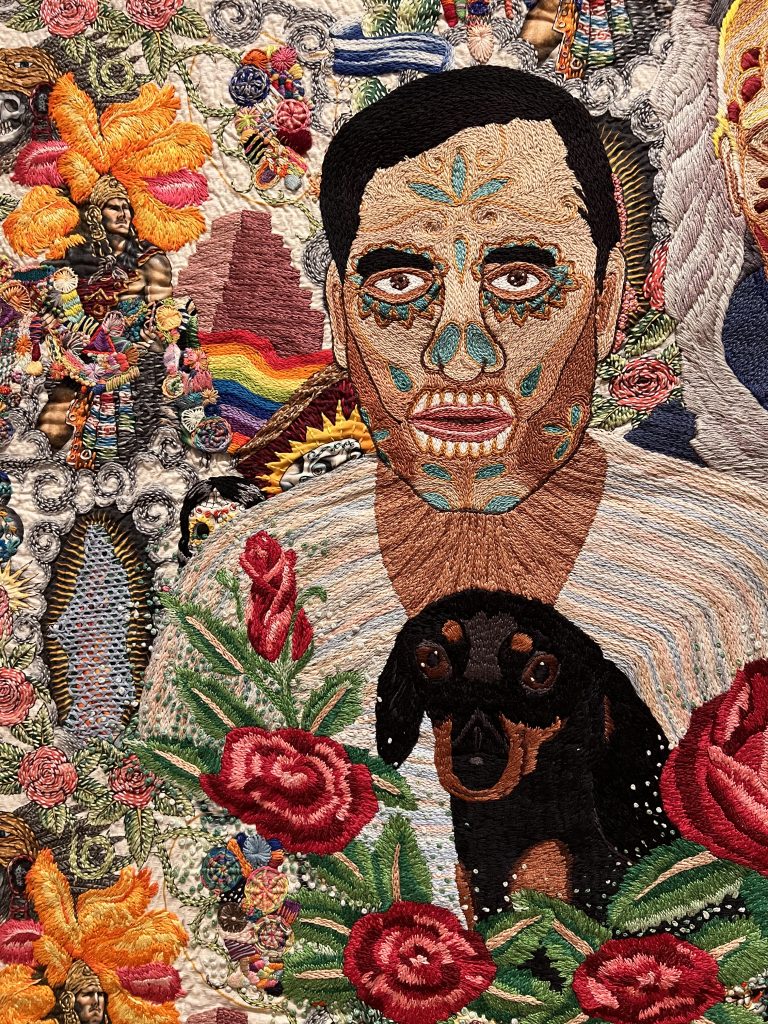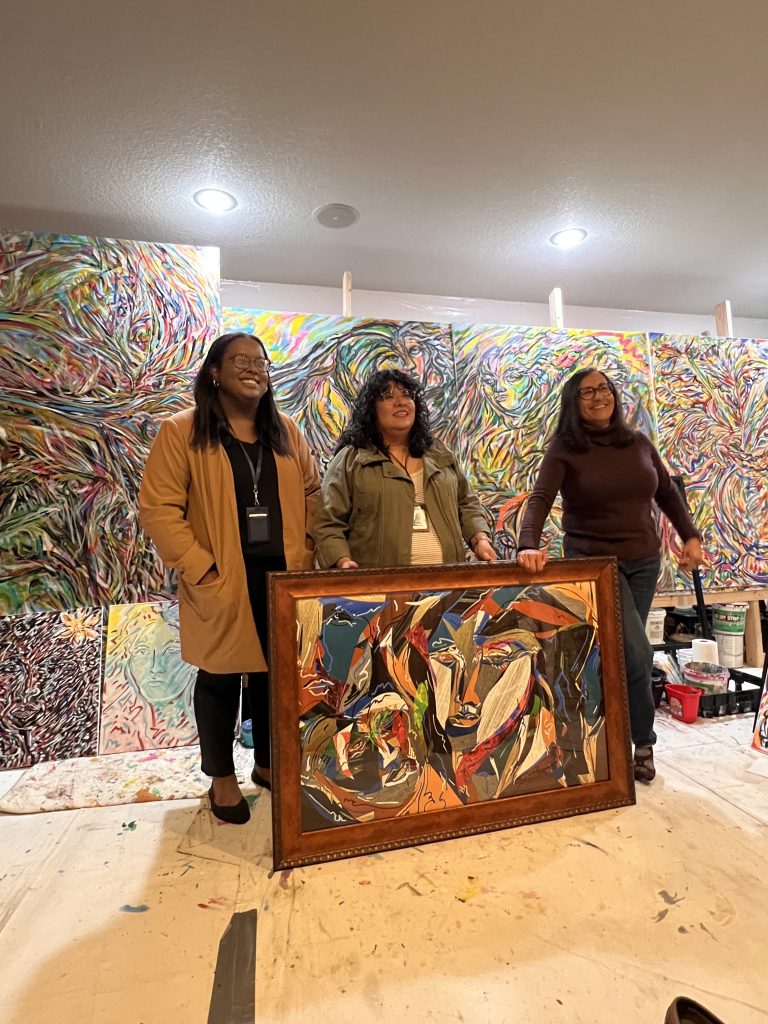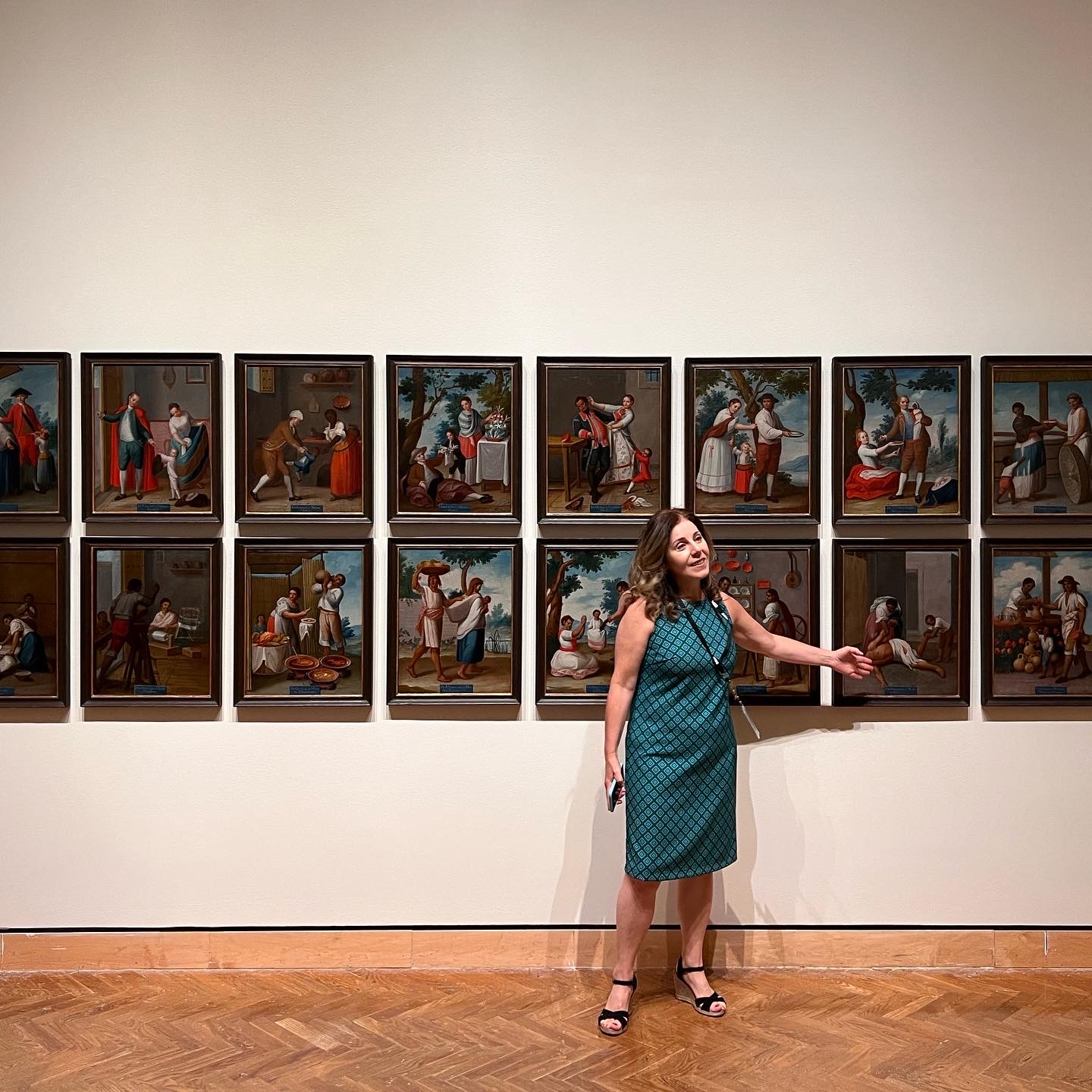MIA Latin American art curator Valéria Piccoli next to the set of “casta” paintings, portrayals of colonial-era Mexico,, by Francisco Clapera 📸 Isabella Silva-Biotti | NewPrensa
By Isabella Silva-Biotti
In a world where museums have long been gatekeepers of history and culture, Valéria Piccoli, the Latin American art curator at the Minneapolis Institute of Art (MIA), seeks to change the narrative. By challenging the singular narratives of art history, Piccoli embarks on a journey with MIA’s new exhibit ReVisión: Art in the Americas that explores the diverse contributions of Latin America, urging museums worldwide to embrace the multiplicity of histories that shape our cultural landscape.
In December 2022, Valéria Piccoli assumed her position as the Latin American art curator at the Minneapolis Institute of Art (MIA). A position she couldn’t refuse, she moved across hemispheres, from Brazil to the United States, and began to examine the objects the MIA already possessed. She was determined to make a plan of “how to grow and make the community recognize itself and its culture of the museum.” Although the relationship isn’t “monolithic”, as Piccoli stated, by understanding the museum’s past work and the Latin American community’s expectations from the institution, the two can build a closer relationship.
“It’s an expansion. It’s a challenge for me as well in terms of expanding my expertise to Latin America as well,” said Piccoli.
When she first arrived, she noticed the importance of Latin artist visibility in the museum. The curator is responsible for the Latin American art collection up until 1970. “Everything after 1970 is the responsibility, or is under purview of another department, which is the global contemporary art,” Piccoli said.
“It’s like seeing the world through other sensibilities, and how they respond to the same challenges that we face.” Her fascination with art always keeps her interested in meeting and listening to what other artists have to say. Despite her appreciation, she doesn’t make a final decision as to who exhibits at the museum.
The exhibit is well-rounded. “ReVisión” invites you to be part of a transformative conversation, one that transcends borders, breaks barriers, and embraces the power of art to reshape our collective future. From the connections to the land, the riches of the place, to organizing our world. From the moment you step foot into the gallery, you’ll be transported into a world where the ancient and contemporary converge, weaving a tapestry of stories that resonate with our Latinx heritage.
Transformative exhibits like “ReVisión” are allowing museums around the world to rethink their collections. “You cannot look to the past with eyes different from those of the present,” Piccoli says. “Contemporary art has this power of establishing our points of view or our lens to look to the past.” As we revise history, we learn about the things the Latinx communities around Latin America have experienced that have shaped their futures. Most importantly, how they have found ways to mold and transform their futures and the visual culture of Latin America.

Piccoli shared how in 2019 the MoMA acquired the painting A Lua (The Moon) (1928) by renowned Brazilian painter Tarsila do Amaral for $20 million dollars. “Art history and museums in consequence are kind-of rethinking about, or admitting, that they have been very focused on promoting one single narrative of art history.” Piccoli said. “Now they are opening their eyes to the fact that they’re not one history and that we are made of multiple histories, and we all contribute in our own way to how culture transforms itself.”
Brazil is distinctive in Latin American history since the country is known for speaking Portuguese while the rest speak Spanish. Despite the language barrier, in the past two decades Brazil and the rest of Latin America have become more integrated.
When you first walk into the exhibit, the room is filled with Brazilian pieces. The placement of the piece’s origin was unintentional, although its curator is Brazilian, and somehow inevitable due to the immensity of the Amazon. Countries across Latin America experience tourists and temporary visitors – or transplants, as some may call – but these cultures permeate resilience as they withhold the foundation of their origins while reflecting and perpetuating its importance to others.

“When I saw the checklist the first thing I did was look where Brazil was,” Piccoli said. Oftentimes, a feeling that most foreigners feel – to seek for themselves in the multitude. The curator took the time to review the checklist and discuss the exhibit with the curators in Denver to get a clearer view. Although the exhibit has remained true to its original, Piccoli made some changes that bring in a touch of her own.
The physical space is the real experience for the visitor. Not the narrative. The colors, how texts are displayed and the tools curators have to engage the visitor with artworks are what bring exhibits together. The buildings hold the artwork and, therefore, allow visitors and art enthusiasts to experience exhibits differently depending on the space it inhabits.
Because an exhibition is like telling a story, it is inevitable for the curator to be part of the exhibition. The curator outlines and indicates the way the story is told. Piccoli identifies mostly with the map visitors can see from a distance, and will see as soon as they walk in. The end of the exhibit is a LGBTQ+ Argentinian textile piece that encompasses many aspects of Latin American culture: the mask, the calaveras, or the flag in a rich and beautiful way.

“I don’t understand the role of the museum unless it is connected to the communities it serves. Why have a museum that no one comes to? The museum has to establish dialogue with the communities and the communities need to feel represented in the museum to care for it because it is an institution that concerns cultural heritage. That is, that mirrors the society that is around it. If we have the Latin American community here, they should be mirrored here as well and they should feel that this is a place for them to come and feel proud of having their culture represented.”
– Valéria Piccoli. Minneapolis, MN. (2023)
But this is just the beginning. Latin Americans can contribute to make their culture more visible and present in the collection through mutual support, within and outside of the community.
As Piccoli is in the process of putting together the Latin American collection prior to the 70s, Latinx’s can still contribute in one way or another. “Maybe have a Latino Council here where we can establish together the strategies for acquiring, for instance, Latin American art,” Piccoli said.
In April, the Minnesota Council on Latino Affairs (MCLA) acquired a few valuable art pieces from Chicano artist Jimmy Longoria for their offices in St. Paul. The MCLA staff visited the artist’s home to experience a powerful and motivating investment to uplift their workspace, and to reflect the important members behind their important legislative work.

How can we transform the narrative? Piccoli says it’s a “daily job”. Investing in underrepresented art work within the Latinx community is a way to shift the narrative. “Being attentive to the artist you acquire and how the diversity can be represented again in the collection is really important for the shift in perspective,” Piccoli said.
“The first thing we learn how to read is art,” Katya Zapeda, the MCLA legislative and policy director – Education, said. By investing in art you are planting seeds everywhere. Art has purpose, and carefully considering the pieces you acquire can provide a space that speaks to its visitors – as our land has been connected and speaks to us every day.
ReVisión: Art in the Americas will be open to the public July 1st – September 17th, 2023 at the Minneapolis Institute of Art.

I’m a Communication Specialist by day and getting lost in art by night!
Do you enjoy reading NewPrensa?
Forward it to someone you think may enjoy it too!
Got suggestions, feedback, or a good scoop?
Send it to us at newprensa@newpublica.com
If someone sent this newsletter your way, feel free to subscribe to get local, BIPOC news



